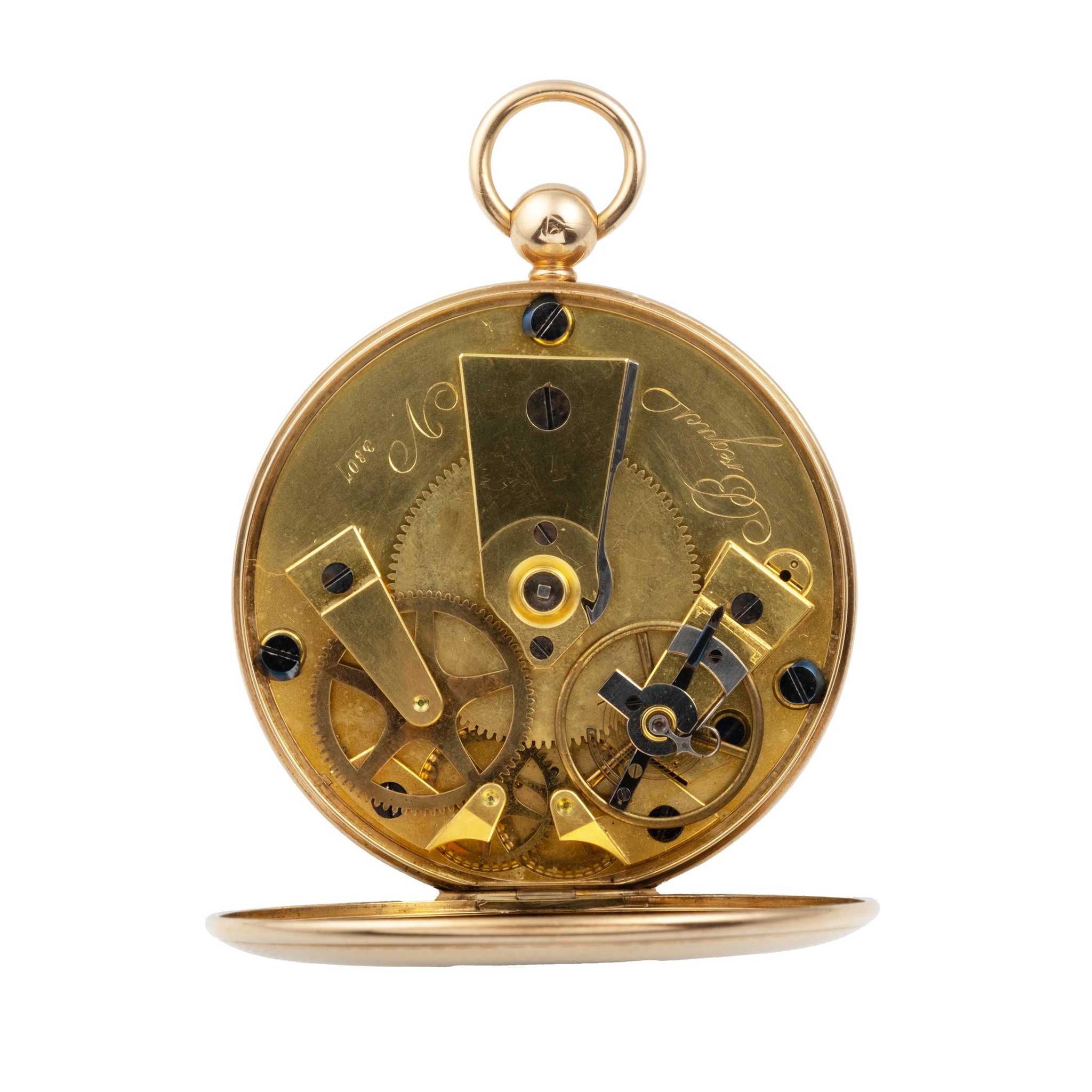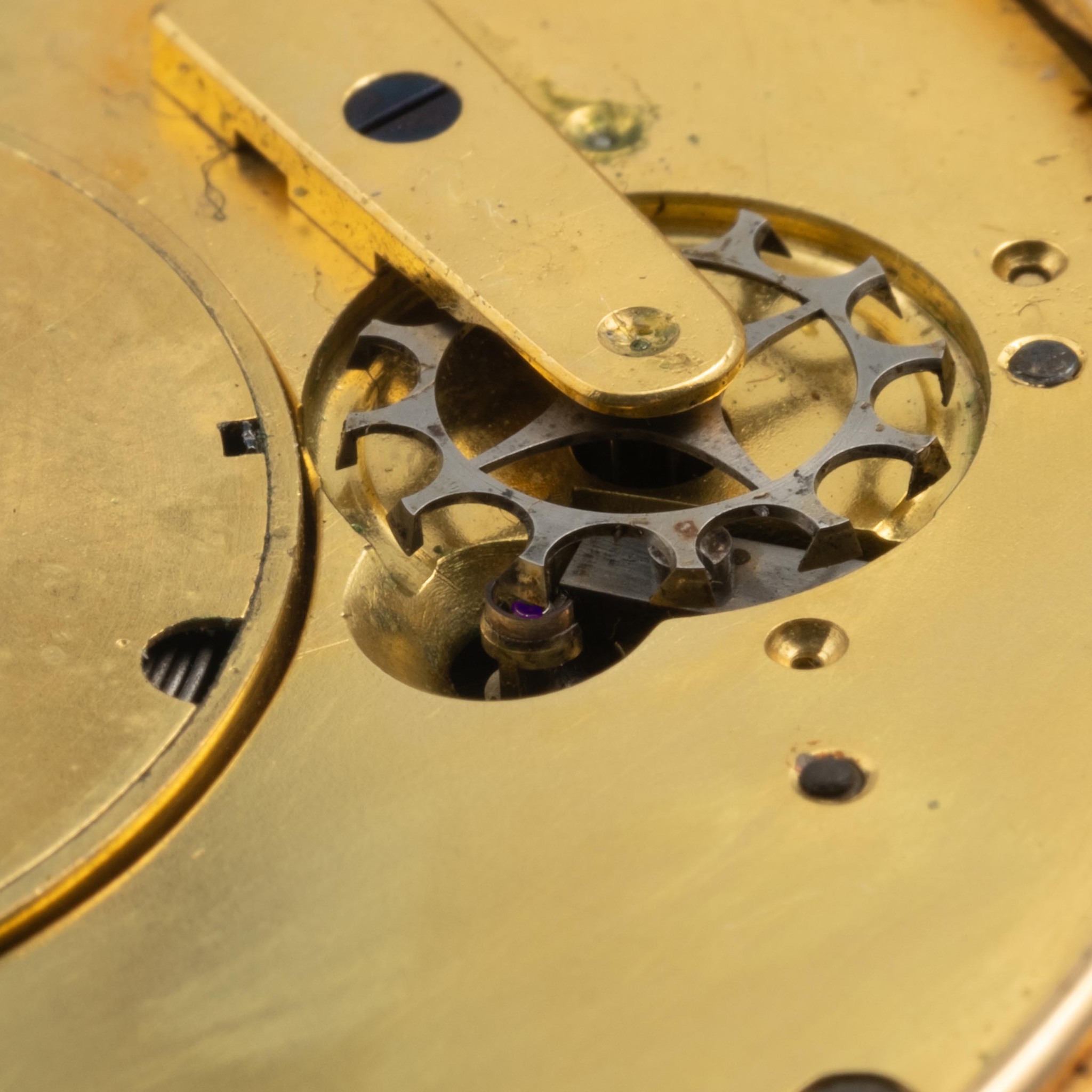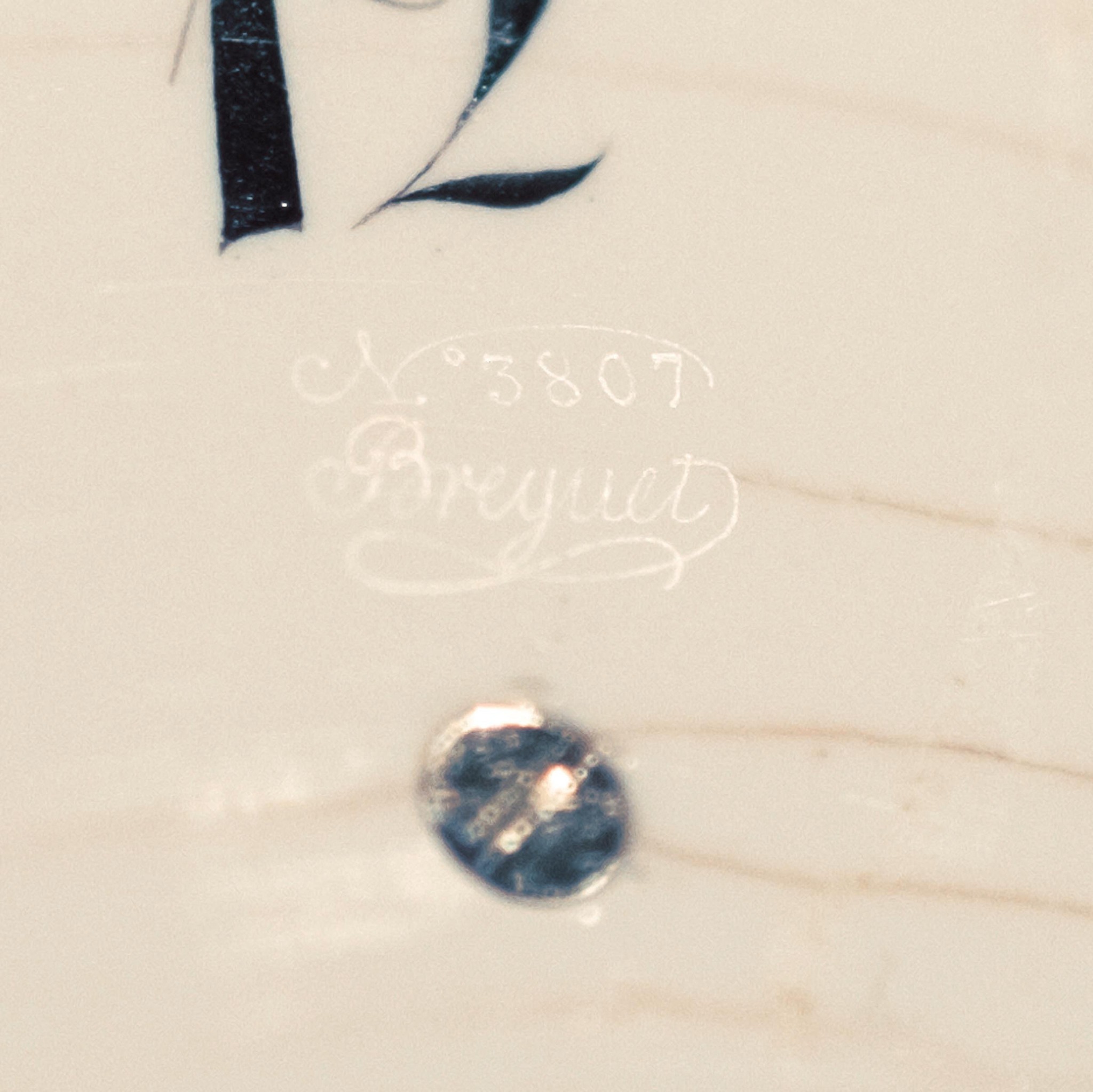Geneva, Nov 08, 2025
LOT 157
BREGUET & FILS, FRANCE, "MONTRE SIMPLE À UNE AIGUILLE DITE MONTRE DE SOUSCRIPTION", RUBY-SET CYLINDER ESCAPEMENT, GOLD
CHF 20,000 - 40,000
HKD 196,000 - 390,000 / USD 25,000 - 50,000 / EUR 21,500 - 43,000 / JPY 3,800,000 - 7,590,000TO BE SOLD WITHOUT RESERVE
Sold: CHF 37,500
A very fine large and very rare, 18k gold open-face, key-winding, large “souscription”-type pocket watch. White enamel dial with suspended “Breguet” numerals and secret signature at 12 o’clock; blued steel unique “Breguet” pointer-hand. Special ruby escapement.
| Grading System | |
|---|---|
Grade: |
|
Case: 3 |
Good |
Movement: 3* |
Good Overhaul recommended, at buyer's expense |
Dial: 3-71-01 |
Good ENAMEL AND VARIOUS TYPES OF DECORATION Hairlines HANDS Original |
Brand Breguet & Fils, france
Year Delivered to Jousselin & Brasch the 19 April 1823.
Movement No. 3807
Case No. 3807B and 55
Diameter 62 mm.
Caliber 58 mm., "Souscription"-calibre, gilded brass, with central going barrel wound from the front only, overhanging ruby-set cylinder escapement, monometallic balance (gilded brass) and blued steel flat hairspring, index regulator with temperature compensating bimetallic curb fitted to the index regulator, top pivot with parachute
Weight 147 gr.
Signature Dial and movement, case made (by Jean-Louis Joly, Paris)
Notes
Breguet’s“Souscription”
Abraham-Louis Breguet (1747-1823) conceived of the idea for the “souscription” watch in 1794. It was one of the many “inventions” resulting from his period of forced exile in Switzerland during the French Revolution. The concept was both simple and brilliant: to offer his clients a watch that was ordered in advance and delivered upon completion.
In silver, with the gold rims being the only decoration, the “souscription” watches were of a large diameter allowing the enamel dial to be divided in such a way that both hours and minutes could be read from a single hand. The movements had a single plate, the spring barrel mounted in the centre and the wheels elegantly positioned and retained by bridges. The single hand was driven directly off the barrel arbour, eliminating the motion work and the intendant friction, and the ruby cylinder escapement was fitted with a parachute (shock protector) and a compensation curb to assist in correcting temperature errors; features that were the norm for all of Breguet’s first class watches.
To further reduce the selling price, Breguet decided to produce these watches in small series (between 12 and 20 examples at a time), with the buyers paying an account of 25% in advance and the balance on completion. Hence the term “de souscription” (by subscription).
The success of these watches enabled Breguet to both re-establish his business, which had understandably been badly affected by the French Revolution and his exile, and to finance much of his research into other areas of horology.
Breguet will then produce some gold “souscriptions” and others “à tact”.
The success of these timepieces encouraged other watchmakers – whether pupils of the master or not – to produce them. While these were duly signed by these watchmakers (such as Charles Oudin), others produced them by forging Breguet’s signature. These watches were often produced in Switzerland (Geneva or the Neuchâtel mountains).





